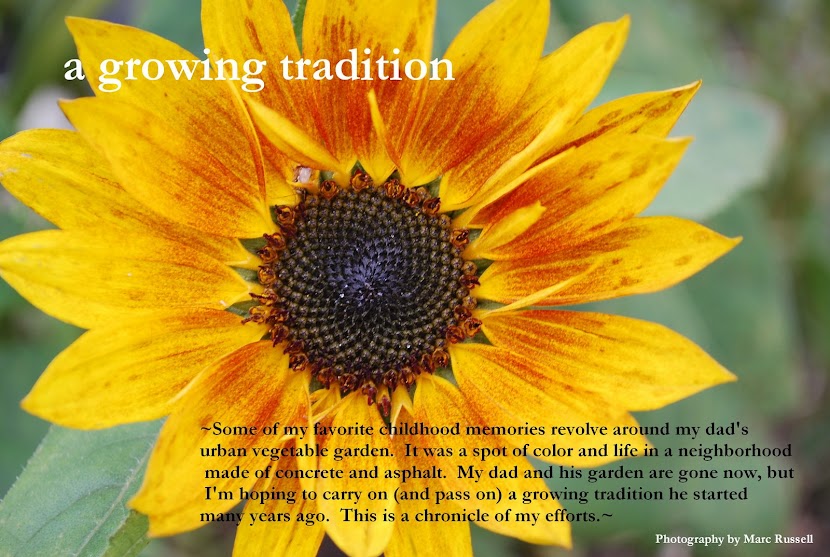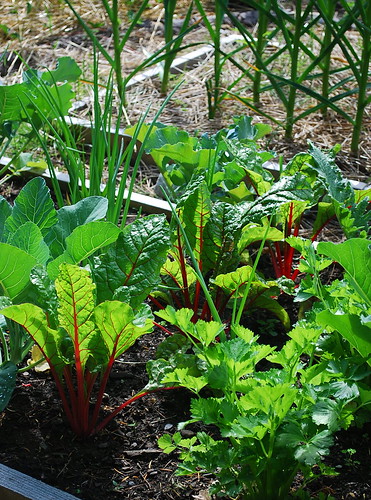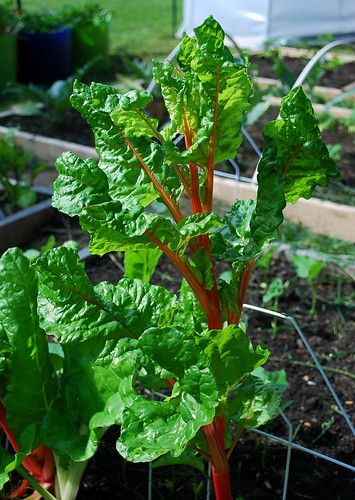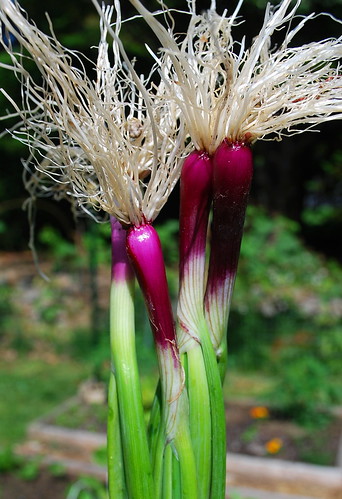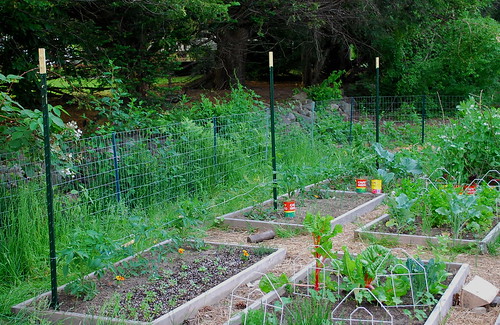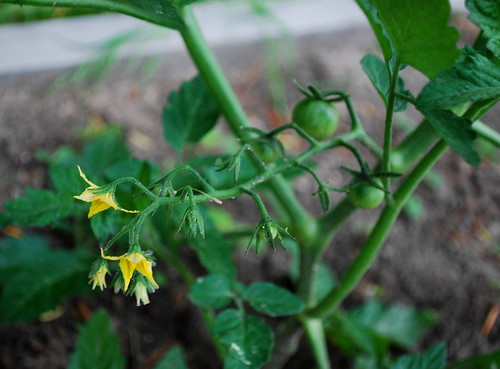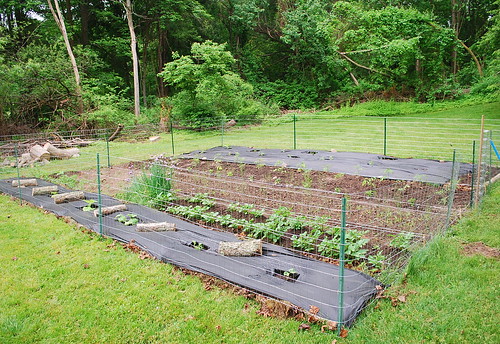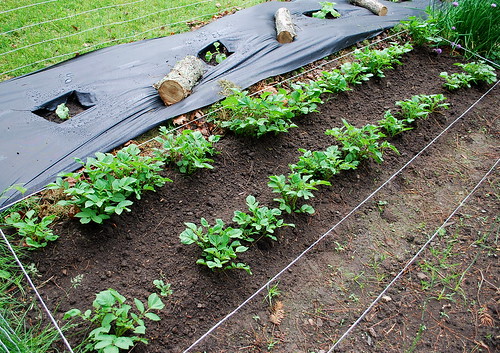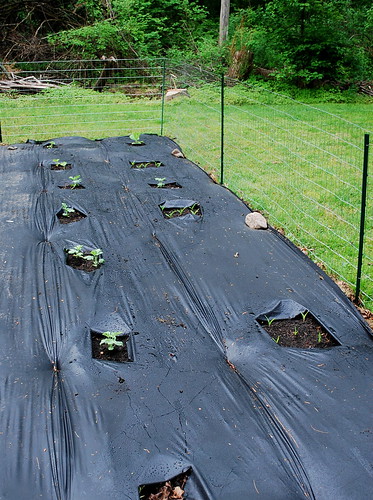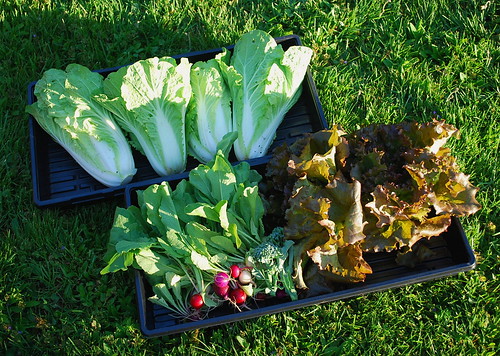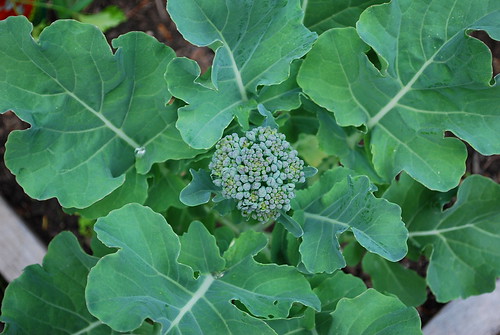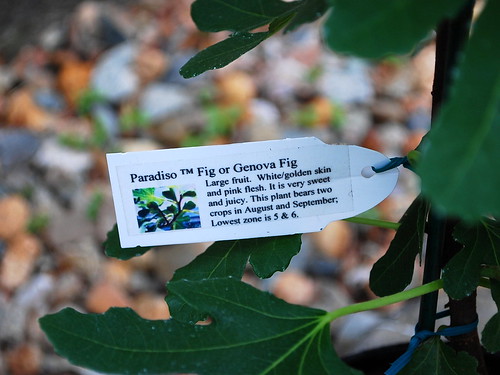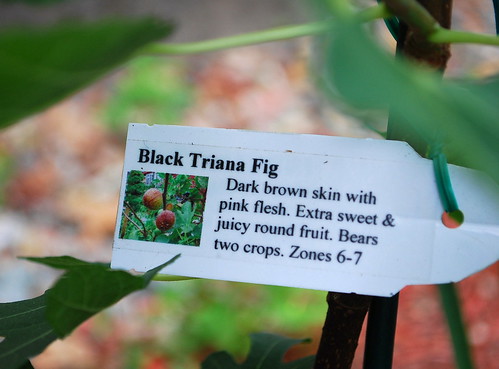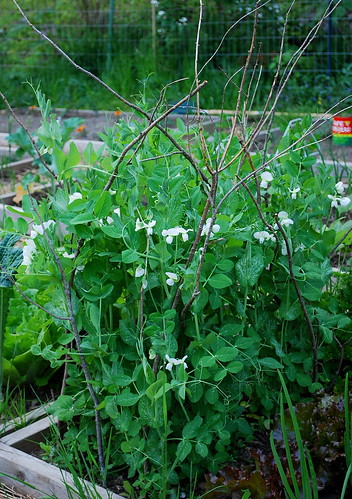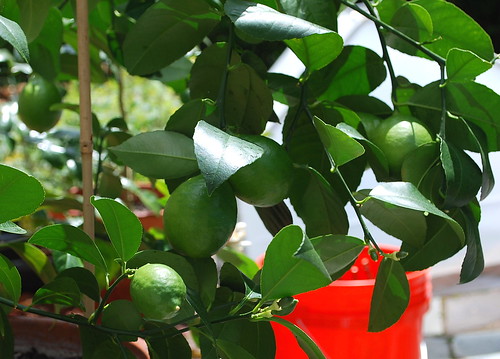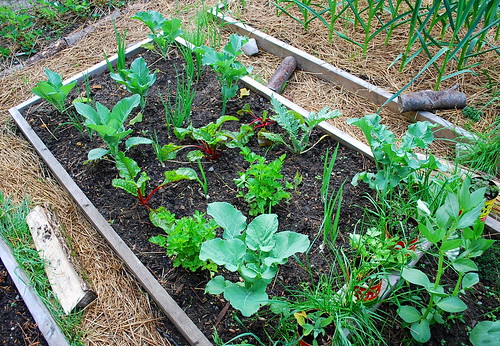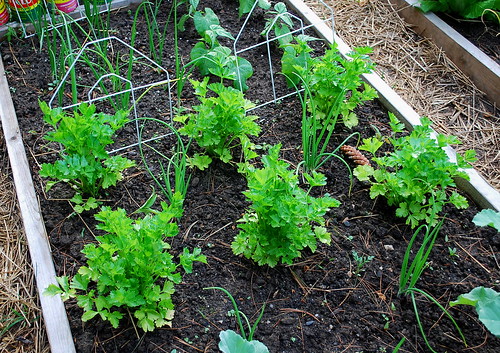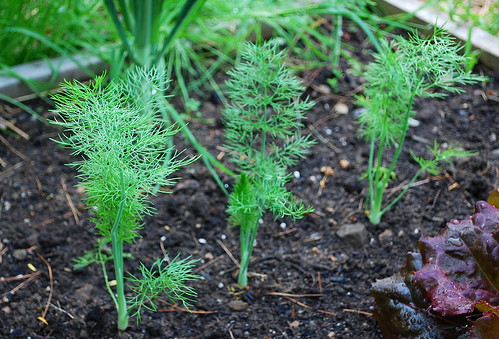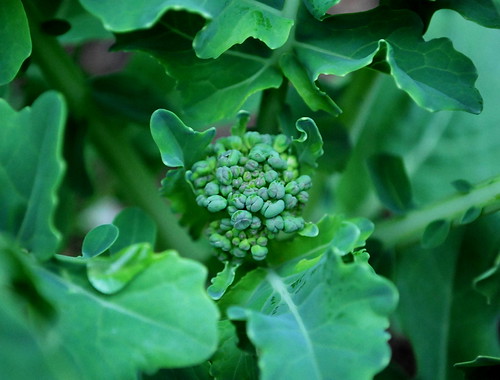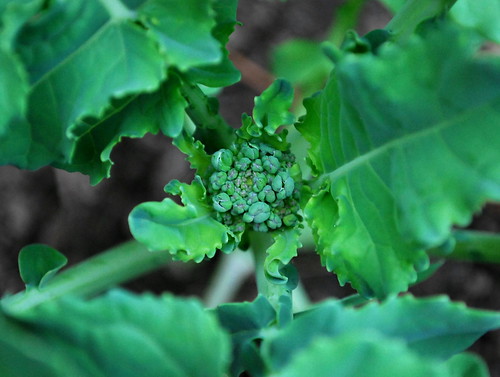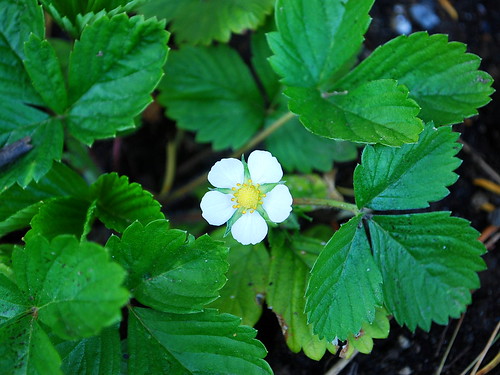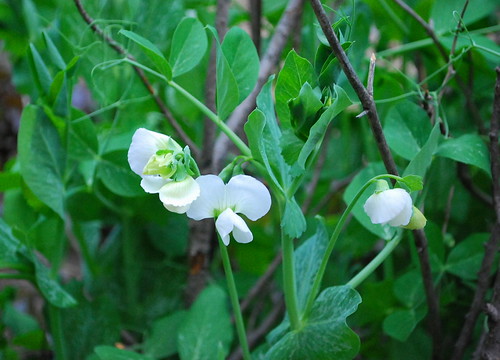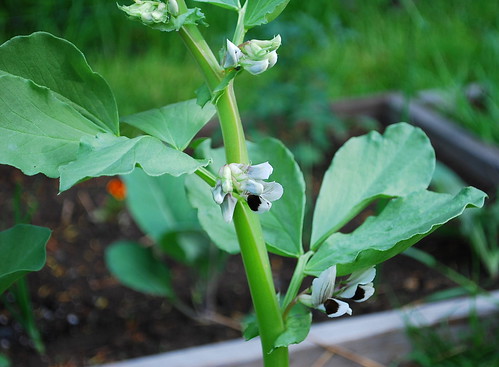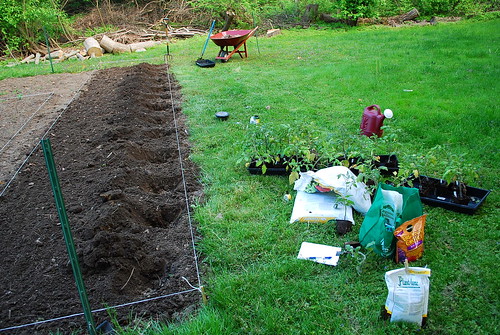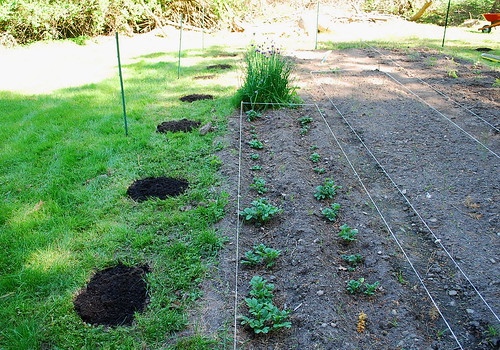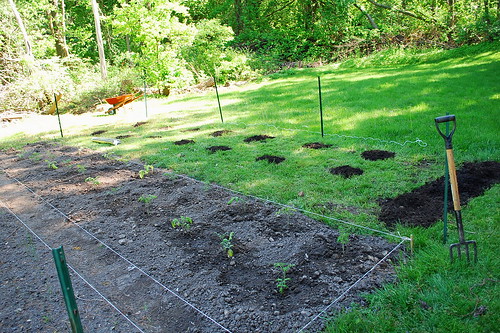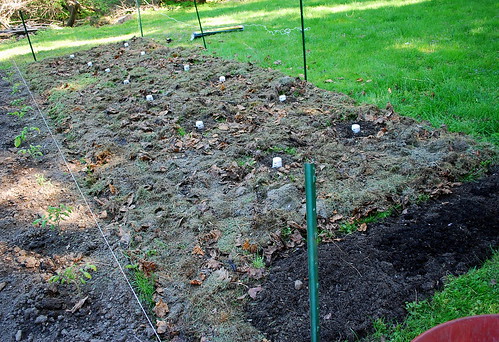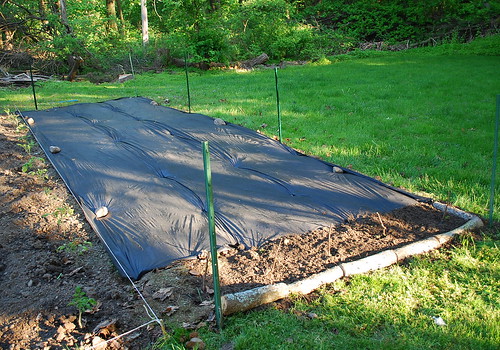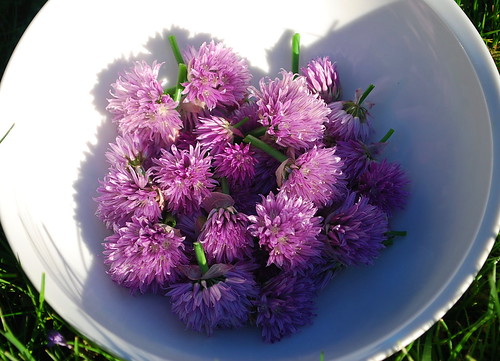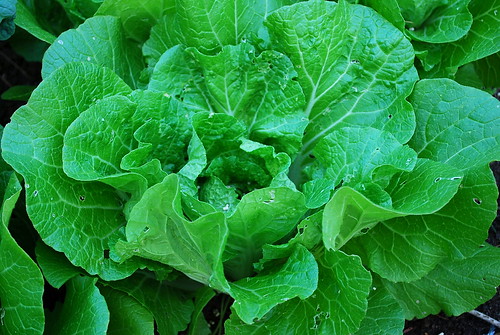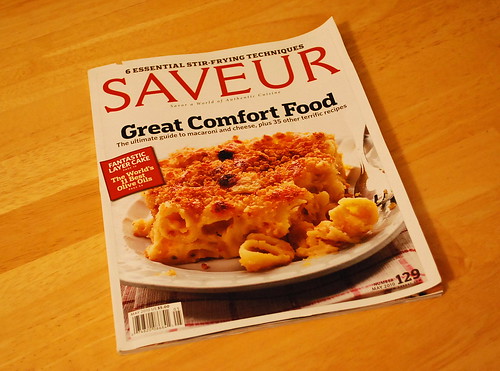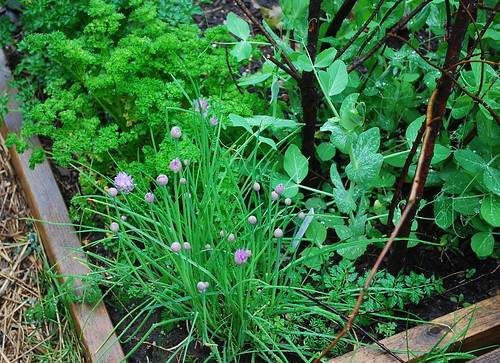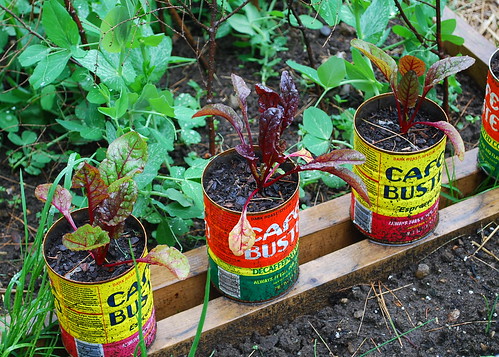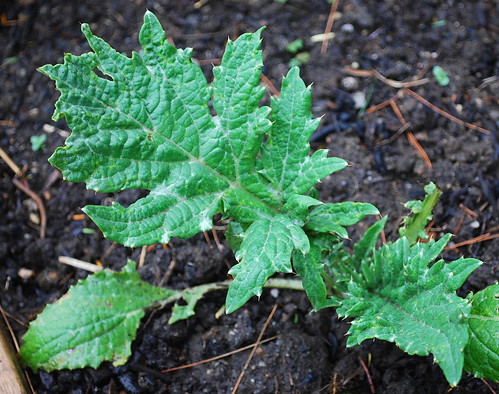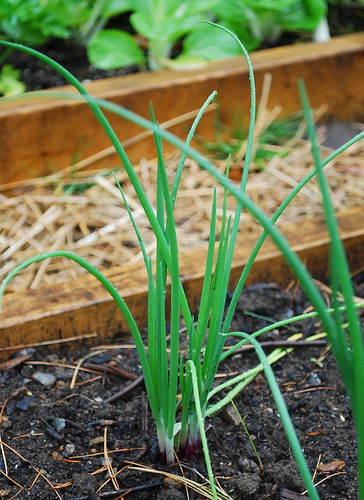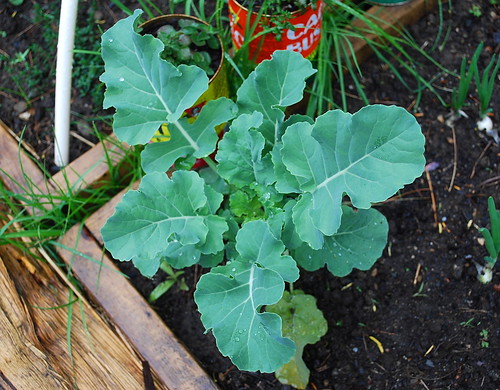
I hope everyone is enjoying their Memorial Day weekend. We couldn't have been blessed with better weather this year. May ends with a nice harvest of tasty greens.
I picked 2 more heads of Red Sails lettuce. I'm glad to note that despite my initial bitter encounter, the lettuce is tasting mighty good.
The ever so reliable Tuscano kale came through again. Grow this vegetable and you will never hungry. I've been trying to stay on top of the little green caterpillars that arrived a couple of weeks ago. After some handpicking and bit of Dipel Dust, I think I have them under control. (The robins have been very helpful as well.)
New to this week's harvest is Rhubarb Chard. The flavor is much more pungent than the Rainbow Chard I grew this past winter. Though I'm not a huge fan of this vegetable, I do love adding it to soups.
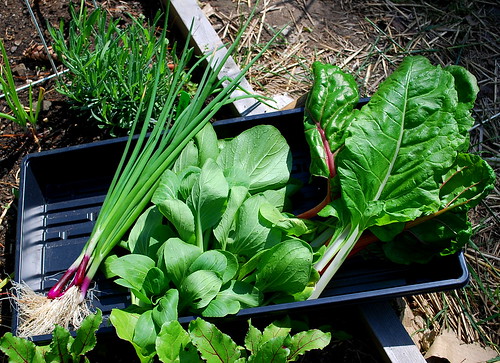
I also harvested some Shanghai bok choy and overwintered Rainbow Chard. The recent hot weather had caused the bok choy to bolt prematurely. Hopefully, it still tastes okay.
Interestingly, the overwintered chard started bolting weeks ago but still tastes good. It was nice to get one last cutting before pulling up the plants.
Finally, I pulled a few of my Red of Florence scallions to see how they were coming along. The color was amazingly brilliant. I added some to a grilled shrimp salad I made today. The taste was nice and not too overpowering. I will definitely grow them again.
Total harvest this week: 2.93 lbs
If you'd like to see what others are harvesting or share your own, visit Harvest Mondays at Daphne's Dandelions.
